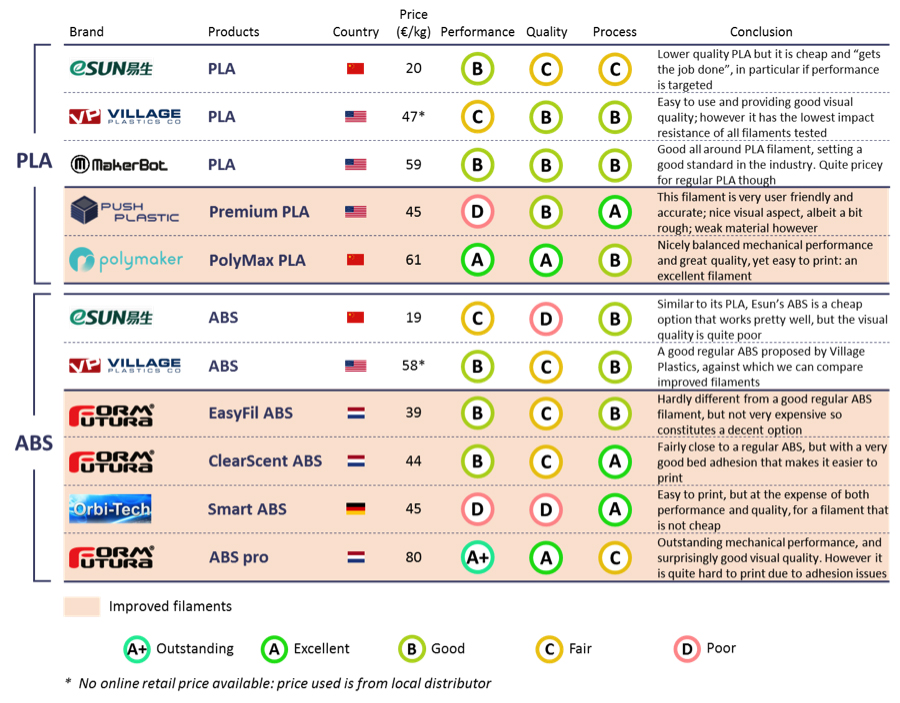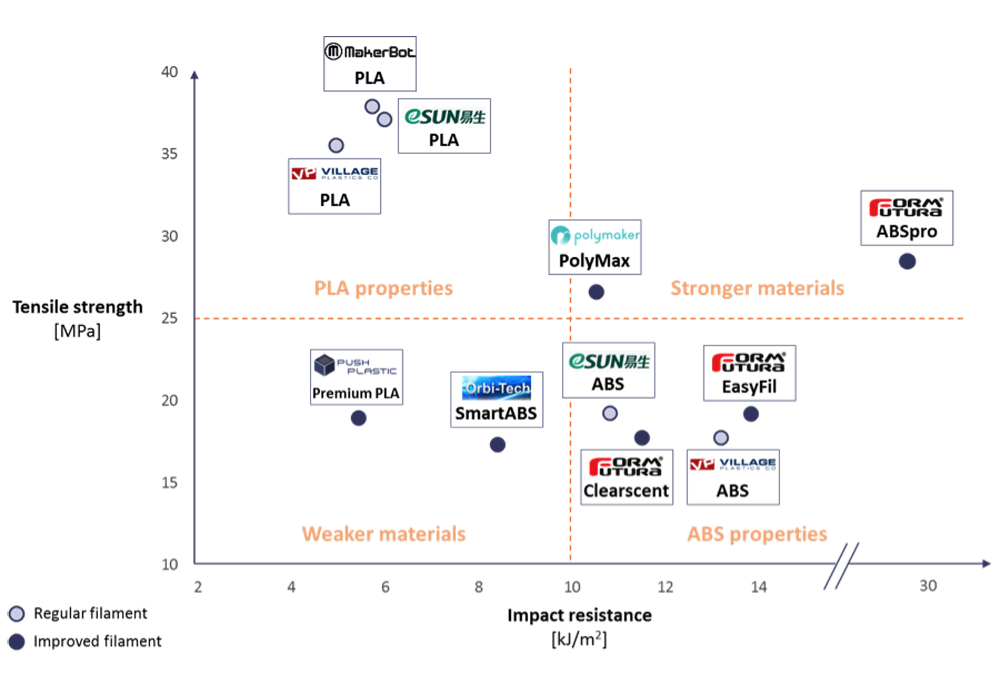3D printing consulting firm 3D Matter is steadily growing their materials research, previously testing various filament manufacturers and the effects that infill has on the various qualities of an FDM/FFF 3D print. Now, the researchers at 3D Matter have begun to tackle a question that I’m sure has arisen in the minds of many a Maker: is “improved” PLA or ABS really all that much better than “traditional” 3D printing feedstock? Specifically, 3D Matter has tested PolyMax from Polymaker; ABS pro, EasyFil, and ClearScent, from Formfutura, Premium PLA from Push Plastic, and Smart ABS from Orbitech to see if these materials really are as max, pro, premium, and smart as they claim to be.
For this study, 3D Matter attempted to enhance their testing procedure, so, in addition tensile tests with a universal testing machine, the firm performed Charpy impact resistance tests, using the same filament color for each test, testing the filaments at different temperatures to ensure that there was no filament bias for temperature, printing torture tests in addition to the owl models, and performing ABS adhesion tests. The results are quite interesting, with some filaments actually proving to be “better” in some regards, though occasionally forsaking some other qualities (better processability with poorer mechanical performance, for instance), and others proving to be pretty standard in comparison with traditional materials.
What 3D Matter found was that PolyMax from Polymaker and ABS pro from Formfutura actually did have improved performance and visual quality. They also discovered that Premium PLA from Push Plastic, Smart ABS from Orbitech, and ClearScent were easy to print, but that Premium PLA and Smart ABS had worse mechanical performance and Smart ABS had reduced visual quality. EasyFil, in the end, was determined to be equal to traditional ABS. Of tensile strength and impact resistance, 3D Matter writes:
It is interesting to note that no filament is the best in both tensile strength and impact resistance. However, Formfutura’s ABS pro is very impressive since it has a tensile strength close to PLA’s, while also being 2x more resistant to impact than the second best filament of the batch. The other filament belonging to the ‘stronger materials’ quadrant – although a lot closer to the center – is PolyMax from Polymaker. It is a good balance between the two characteristics, retaining good tensile strength but with a much higher impact resistance than regular PLA. At the other end of the graph, Premium PLA from Push Plastic and Smart ABS from Orbitech belong to the ‘weaker materials’ quadrant. They have both low tensile strength and low impact resistance. Finally, Formfutura’s ClearScent and EasyFil show very similar performance to regular ABS with low tensile strength and high impact resistance.
In the future, 3D Matter plans to work on even more filaments, including flexible materials, Nylon, PET, PC and more. There’s a growing amount of research for industrial 3D printing, made available at high prices for businesses and investors. What’s most exciting about the firm’s reports, so far, is that offer much needed data on prosumer 3D printing, giving Makers an opportunity to better understand the market of materials available to them. As 3D Matter continues to grow its research, I’m excited to see what they come up with. And what they come up with might be dictated by you, as the firm writes, “Currently, 3D Matter is testing various materials to broaden its understanding of the current market. If you would like to design a test tailored to your requirements in terms of filaments and/or printer, please contact us at: [email protected].” For now, though, read the full report here.
Correction: This article previously stated that ClearScent filament from Formfutura had poor mechanical performance, when it should have read that Smart ABS from Orbitech had poor mechanical performance.




